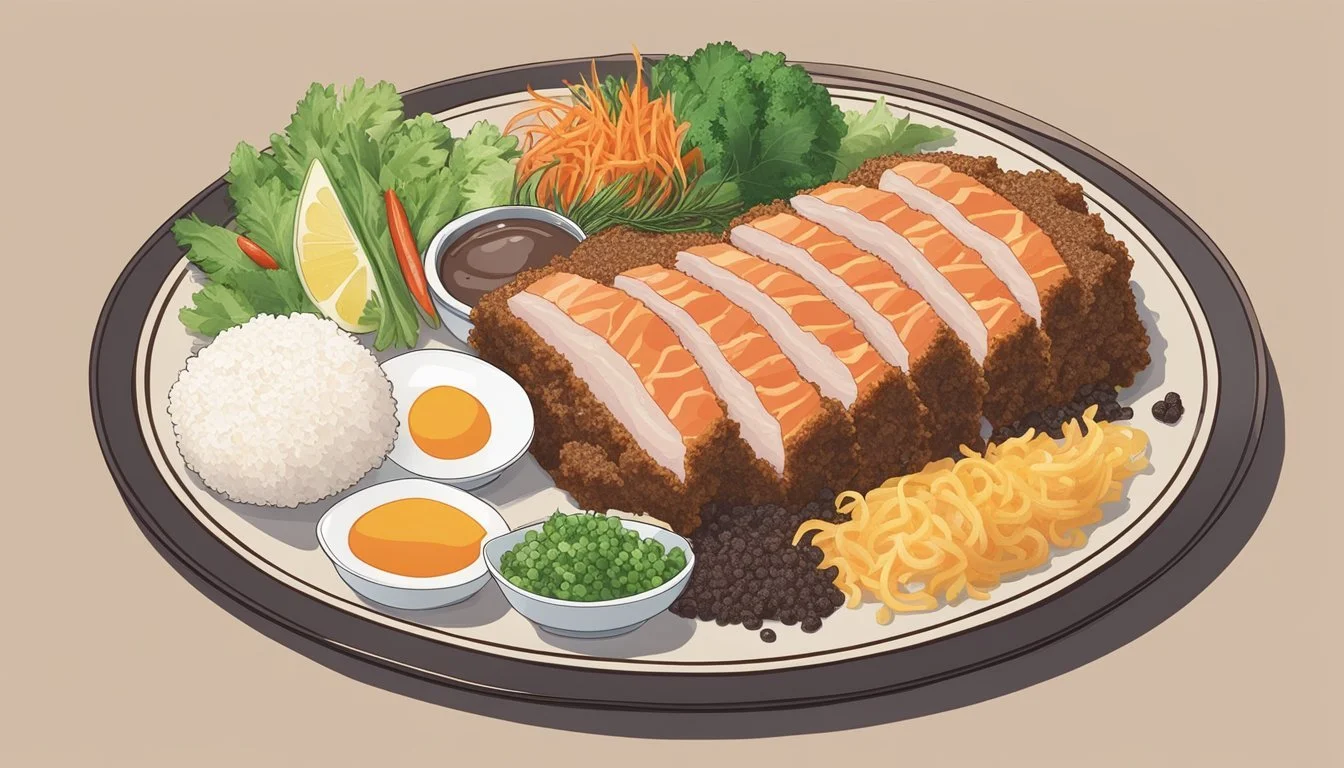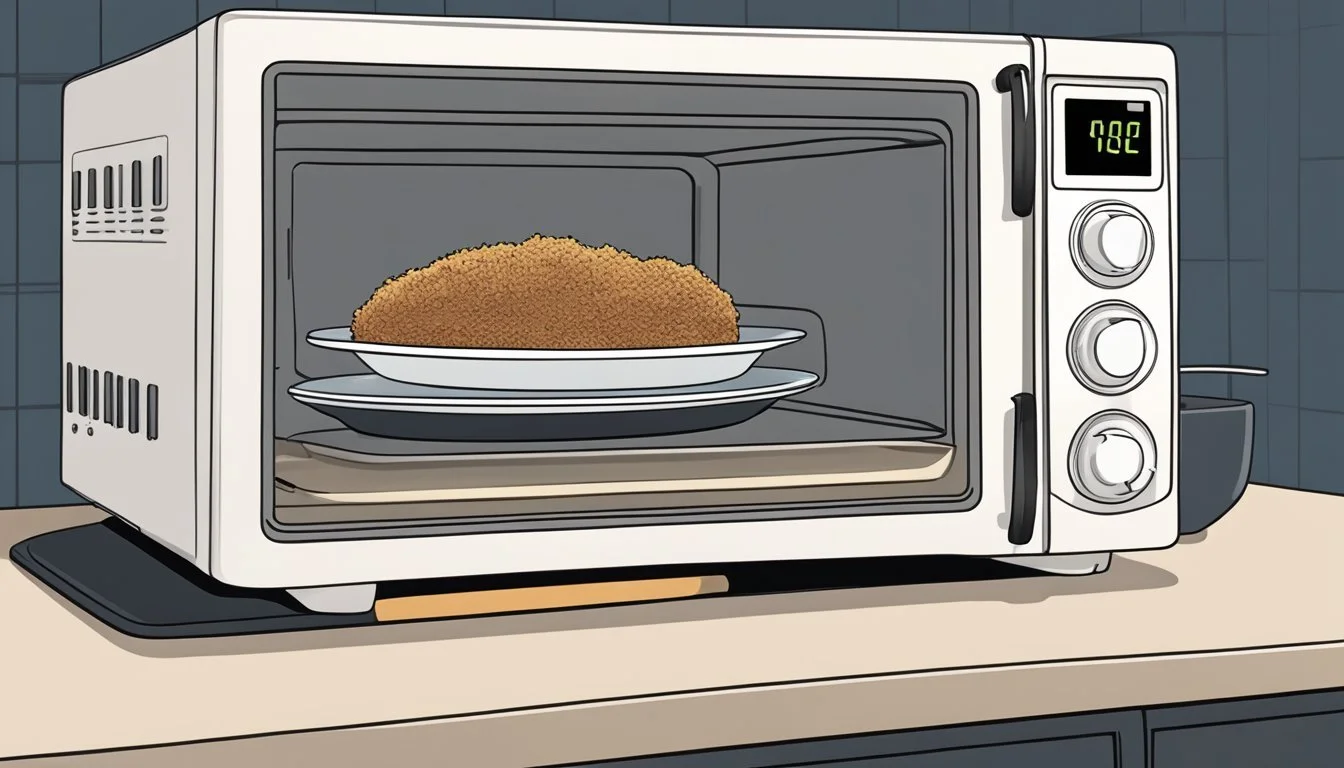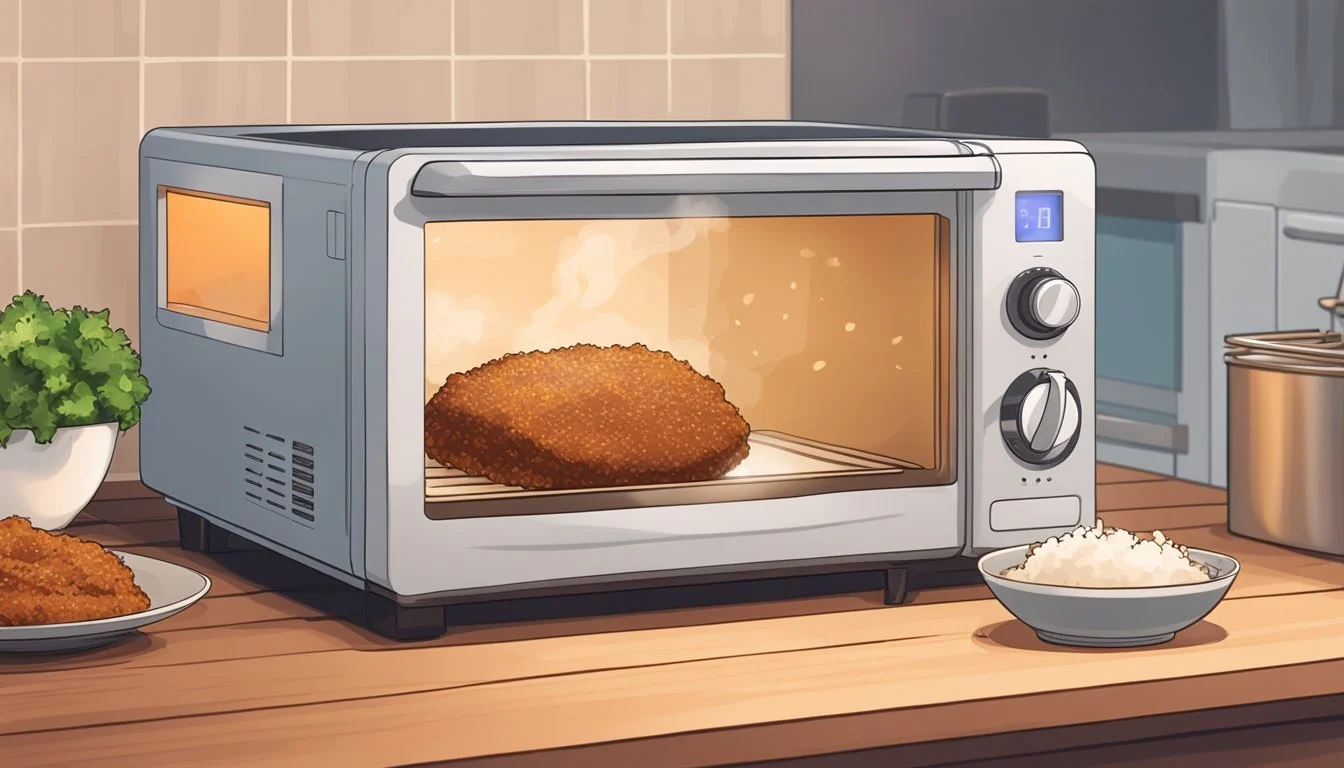How to Reheat Beef Tonkatsu for Ideal Crispiness and Flavor
Reheating beef tonkatsu to retain its crispy exterior and tender interior can be challenging. To achieve the best results, place the beef tonkatsu on a baking sheet or wire rack and heat it in a preheated oven at 350ºF (180ºC) for about 10-15 minutes. This method helps prevent sogginess and keeps the meat juicy.
If you're dealing with frozen tonkatsu, thaw it first to ensure even heating. Baking it for 20-30 minutes should suffice, making sure to flip the cutlet halfway through. Using a wire rack instead of a baking sheet can further enhance the crispiness by allowing better air circulation.
Another tip for reheating these delightful Japanese pork cutlets is to cover them loosely with aluminum foil if you notice they are drying out. This step can help maintain moisture while still allowing the breading to crisp up. Enjoy your reheated tonkatsu with your favorite dipping sauce for a meal that tastes almost as good as fresh.
Understanding Beef Tonkatsu
Beef Tonkatsu is a hearty Japanese dish that combines a crispy exterior with the rich flavors of beef. This dish offers a unique twist on the traditional pork katsu, providing a robust and satisfying alternative.
The Basics of Tonkatsu
Tonkatsu is a popular Japanese dish traditionally made with pork cutlets, but an increasing number of variations use beef. The concept involves coating the meat in flour, egg, and panko breadcrumbs before deep-frying it to create a crispy exterior. Beef Tonkatsu follows this same method, resulting in a dish that's both crunchy and flavorful.
The preparation consists of several key steps:
Meat Preparation: Beef is pounded to ensure even cooking.
Coating: The beef is coated in flour, beaten egg, and panko breadcrumbs.
Frying: Typically deep-fried until golden and crispy, maintaining a juicy interior.
These steps are essential for achieving the perfect texture and taste, which distinguish Beef Tonkatsu from other Japanese dishes.
Distinct Characteristics of Beef Tonkatsu
Beef Tonkatsu stands out due to its unique flavor profile, distinguishing it from the traditional pork version. The beef provides a richer taste, often preferred by those who enjoy red meat. The crispy exterior, achieved through panko breadcrumbs, contrasts pleasantly with the tender beef inside.
Key characteristics include:
Flavor: Rich and savory due to the beef.
Texture: Crunchy crust paired with tender, juicy meat.
Ingredients: Typically includes beef cutlets, panko breadcrumbs, and seasoning such as salt and pepper.
This combination creates a dish that is both satisfying and versatile, suitable for various palates and occasions.
Essential Ingredients and Substitutes
Beef tonkatsu requires high-quality ingredients for the best flavor and texture. It's possible to make dietary adjustments and substitutions to cater to various dietary needs without compromising the dish's integrity.
Main Ingredients for Beef Tonkatsu
Beef Cutlets: Choose cuts that are tender and have even marbling, such as Wagyu for a rich, buttery flavor. If Wagyu is not available, other tender cuts like sirloin or ribeye work well.
Panko Breadcrumbs: These Japanese breadcrumbs are essential for achieving the crispy coating that tonkatsu is known for. They provide a light and airy texture compared to regular breadcrumbs.
Eggs: Used to help the panko breadcrumbs adhere to the beef. They create a barrier that allows the breadcrumbs to become golden and crispy during cooking.
All-Purpose Flour: This is used for dredging the beef before coating it in eggs and panko. It helps in creating a base layer that allows other coatings to stick evenly.
Substitutes and Dietary Adjustments
Gluten-Free: For a gluten-free version, replace panko breadcrumbs with gluten-free breadcrumbs. Use gluten-free all-purpose flour for dredging.
Vegetarian/Vegan Option: Replace beef cutlets with tofu, preferably firm tofu, as it holds up well during cooking. Ensure the tofu is well-pressed to remove excess moisture.
Egg Substitutes: Use flaxseed meal mixed with water or aquafaba (chickpea water) as a binding agent if you need an egg-free alternative.
Adjustments can be made to cater to specific dietary preferences while still preserving the essence of beef tonkatsu. Substitution of ingredients such as tofu or gluten-free options allows for flexibility without losing the core characteristics of the dish.
Preparation Before Reheating
Proper preparation is key to ensuring your beef tonkatsu remains delicious and retains its texture during reheating. Focus on correct storage methods and essential pre-reheating steps.
Storing Beef Tonkatsu Correctly
To maintain the best flavor and texture, store leftover beef tonkatsu in an airtight container. This helps prevent moisture loss and contamination. Place the container in the refrigerator as soon as the tonkatsu has cooled to room temperature.
If you plan to store it for more than a few days, consider freezing. Wrap the beef tonkatsu individually in plastic wrap, then place in a freezer-safe bag or airtight container before freezing. When ready to reheat, allow it to thaw in the refrigerator overnight to ensure even reheating.
Pre-Reheating Tips
Before reheating, adjust the oil temperature to avoid burning or undercooking. Preheat the oven to around 350°F (175°C) if you are using this method, or set the air fryer to a low temperature, such as 250°F (120°C). Use neutral-flavored cooking oil with a high smoke point for optimal results.
Cover the beef tonkatsu loosely with aluminum foil to retain moisture. Place the tonkatsu on a wire rack over a baking sheet to allow air circulation and prevent sogginess. If using a microwave, place a microwave-safe cup filled with water next to the tonkatsu to help keep it moist.
Reheating Techniques
Maintaining the crispy texture and juicy interior of beef tonkatsu during reheating requires specific techniques. Here are various methods to ensure your dish remains delicious.
Oven Method for Reheating
Preheat the oven to 350°F (175°C). Place the beef tonkatsu on a baking sheet or wire rack. Optionally, loosely cover it with aluminum foil to prevent drying out. Reheat for about 10-15 minutes, checking for desired crispiness and juiciness. Flip the tonkatsu halfway through to ensure even heating. Remove the foil for the last few minutes to regain maximum crunch.
Using a Skillet
Heat a skillet over medium heat and add a small amount of oil. Place the beef tonkatsu in the skillet, cooking for 2-3 minutes on each side. This method helps to maintain the golden-brown color and crispy texture. Pay attention to avoid burning the breading. Press the tonkatsu gently with a spatula to ensure all parts get crispy.
Utilizing the Microwave
For quick reheating, the microwave can be effective, though it might compromise the crunchiness. Place the beef tonkatsu on a microwave-safe plate lined with a paper towel. Heat on medium power for 1-2 minutes. Check the temperature and heat in additional 20-second intervals if needed. Use a microwave crisper tray if available to reduce sogginess.
The Air Fryer Method
Preheat the air fryer to 350°F (175°C). Place the beef tonkatsu in the basket, ensuring they are not overcrowded. Reheat for 4-5 minutes, checking to maintain a golden brown and crispy exterior. Shake the basket halfway through to ensure even reheating. This method is excellent for preserving the texture and quick reheating.
Serving and Pairing
To fully enjoy beef tonkatsu, consider the impact of complementary side dishes, appropriate sauces, and perfect presentation. Paying attention to these elements ensures a well-rounded and authentic meal.
Side Dishes to Complement Beef Tonkatsu
Shredded Cabbage: A classic pairing, shredded cabbage provides a refreshing crunch that balances the richness of the fried cutlet. Serve it plain or with a light drizzle of tonkatsu sauce.
Steamed Rice: Steamed white rice is a staple in Japanese meals and complements the savory flavors of beef tonkatsu. Brown rice can also be used for a nuttier flavor and chewier texture.
Miso Soup: This traditional soup adds umami depth and a warming element to the meal. Include tofu, seaweed, and green onions for added flavor and texture.
Fried Brown Rice: As an alternative to plain rice, fried brown rice can be a flavorful side, enhanced with vegetables such as peas, carrots, and corn.
Sauce Pairings
Tonkatsu Sauce: This popular sauce, often resembling a thick Worcestershire sauce, combines sweetness and tanginess, enhancing the flavor of beef tonkatsu. It typically includes soy sauce, sugar, and spices.
Katsu Sauce: Another great option, this sauce is similar to tonkatsu sauce but may vary slightly in sweetness and spice. Some recipes include ketchup and Dijon mustard for a unique twist.
Soy Sauce: While less common, a light soy sauce can add a salty, savory element. Use sparingly to avoid overpowering the beef tonkatsu.
Homemade Sauce Variations: Customize your sauce with a blend of Worcestershire sauce, soy sauce, and sugar. Adjust the ingredients to match your taste preferences.
Serving Temperature and Presentation
Temperature: Serve beef tonkatsu hot and crispy for the best experience. Reheat in an oven to maintain its crunchiness.
Presentation: Traditional presentation includes arranging the tonkatsu cutlets neatly on a plate, alongside shredded cabbage and rice. Use small bowls for miso soup and sauces.
Garnishing: Add a slice of lemon for brightness and freshness. A sprinkle of salt on the cutlets before serving can also enhance the flavor.
Meal Arrangement: Arrange the meal components thoughtfully, reflecting the balance and attention to detail typical of a Japanese meal.
Maintaining Optimal Taste and Texture
For the best reheated beef tonkatsu, it's essential to preserve both its juiciness and crispiness. Follow these steps for optimal results.
Ensuring Juiciness
To keep the beef tonkatsu juicy, avoid over-reheating. Preheat the oven to 375°F (190°C) and place the cold tonkatsu on a baking sheet lined with parchment paper. Cover the sheet loosely with aluminum foil. This cover helps retain moisture while preventing the exterior from becoming overly brown or dry.
Reheat for around 10-15 minutes. Check the internal temperature to ensure it reaches 165°F (74°C); a meat thermometer can be useful. Removing the foil in the last few minutes can help balance moisture with a touch of crispiness.
Crispiness Restoration Techniques
Achieving a crispy exterior involves removing excess oil and avoiding sogginess. After reheating, consider a few minutes of pan-frying on medium heat to ensure maximal crunchiness without becoming greasy. Use a wire rack to drain any remaining oil instead of paper towels.
Additionally, a preheated oven at a slightly higher temperature, such as 400°F (204°C), for a brief period—2-3 minutes—can help regain a crunchy texture. Avoid microwaving; it often leads to a soggy exterior. These steps can restore the original crispy delight that makes tonkatsu special.
Reheating Leftovers Safely
Reheating leftovers, especially pork cutlets like beef tonkatsu, requires careful attention to food safety and precise heating times to ensure both safety and taste. This guide will cover essential tips for both.
Food Safety Considerations
When dealing with leftovers, temperature control is paramount. It's vital to store beef tonkatsu and other pork cutlets in shallow containers to ensure they cool down quickly in the refrigerator. This minimizes bacterial growth.
Before reheating, ensure the leftovers have been stored at or below 40°F (4°C). Use a food thermometer to check the internal temperature while reheating. Pork cutlets should reach at least 165°F (74°C) to be considered safe to eat.
Determining Reheating Duration
How long it takes to reheat leftovers depends on the method used. For quick and easy reheating, a microwave is a popular choice. Place the cutlets on a microwave-safe dish, cover them with a damp paper towel, and heat for 1-2 minutes.
For a crispy exterior, use an oven or toaster oven. Preheat to 325°F (163°C), place the cutlets on a baking sheet, and bake for 10-15 minutes. If reheating several pieces, ensure they're evenly spaced for consistent heating.
A non-stick pan on medium heat can also be effective. Heat each side for 2 minutes until the internal temperature reaches safe levels. This method also helps retain the texture of the shredded cutlets.
Nutritional Insights
This section provides a detailed look into the nutritional content of beef tonkatsu, highlighting its calorie content, protein, carbohydrates, and fiber, and offers guidance on how to balance your meal for a healthier dietary choice.
Calorie Content and Nutritional Value
Beef tonkatsu is a rich source of calories and macronutrients. A typical serving of beef tonkatsu, roughly 150 grams, contains approximately 400-500 calories. The calorie content may vary depending on the specific cut of beef and the cooking method.
In addition to calories, beef tonkatsu offers a significant amount of protein, typically around 25-30 grams per serving. This protein content makes it an excellent choice for those looking to build or maintain muscle mass. The dish also includes carbohydrates, mainly from the breading, contributing about 20-25 grams per serving.
The fiber content in beef tonkatsu is generally low, often less than 2 grams, given that the main ingredients—meat and breadcrumbs—are not fiber-rich. Understanding the nutritional value can help you make informed dietary choices, particularly if you have specific health goals.
Balancing Your Meal
To balance the rich nutritional components of beef tonkatsu, it is beneficial to pair it with vegetables or whole grains. Incorporating side dishes like a fresh salad, steamed vegetables, or brown rice can enhance the nutritional profile of your meal.
Vegetables add essential vitamins, minerals, and dietary fiber that beef tonkatsu lacks. Including fiber-rich foods can aid in digestion and help maintain a healthy gut. Additionally, choosing whole grains over refined grains can contribute to a more balanced meal by providing complex carbohydrates and additional fiber.
Consider controlling portion sizes to maintain a balanced calorie intake. Opting for lean cuts of beef and using minimal oil during cooking can reduce fat content and overall caloric load. These adjustments can help create a well-rounded meal that aligns with health and wellness goals.
By balancing beef tonkatsu with complementary foods, it is possible to enjoy this flavorful dish while adhering to a nutritious diet.







